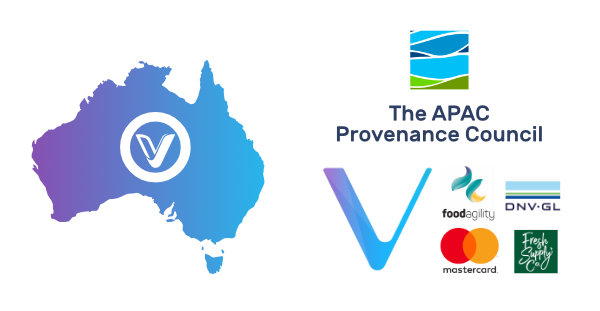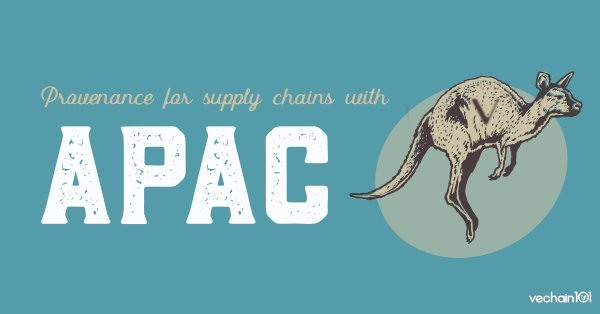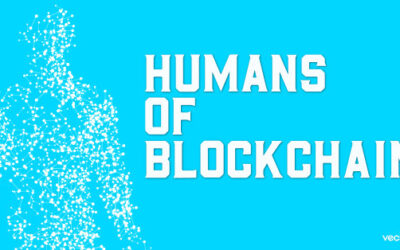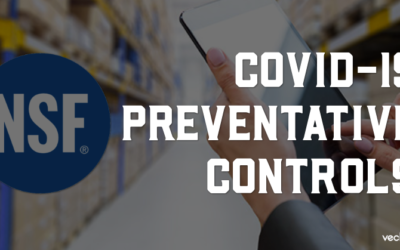What is the APAC Provenance Council?
Headquartered in Brisbane, the APAC Provenance Council is a not-for-profit consortium that includes standard agencies, food industry bodies and companies in the blockchain, finance and packaging sectors. Their aim is to provide end-to-end authentication, provenance, traceability and trade finance solutions for Asia-Pacific’s agricultural, food and beverage industries.

Official Article on Medium
So what’s different this time around?
For years, we’ve been hearing about the magic of blockchain. You’ve all heard this before: It could reduce fraud, cut costs, improve efficiency, increase trust – the whole nine yards. Only there was one major hurdle that many people overlooked: Businesses lacked urgency. Despite all the government pressure, investment and hype, many in the business community still weren’t convinced that spending money and making significant changes to established business processes would result in a stronger financial performance: Would consumers pay more for a product just because it was on the blockchain?
In order to make that answer a resounding yes, we need one of two things to happen. The first, which is increased consumer awareness, appreciation and demand for blockchain traceability, is likely to be a gradual process. The second could be achieved much faster: Giving businesses a secondary incentive that is tangible in nature. This could come in the form of access to new markets, faster customs processing times, more retail coverage, or faster payment processing times.

The APAC Provenance Council promises to do many of those things, but really excels by helping local producers in Australia get paid for their labors. Cash flow is a major bottleneck in the B2B farming world, especially with COVID-19 piling on uncertainty to what was already a high risk industry. Unlike the B2C business world, where customer payments arrive nearly instantly, farmers in a B2B world need to be much more patient. How much of a difference-maker is this? According to Fresh Supply Co and APAC Provenance Council head David Inderias, this brings the payment time down from receipt of goods plus thirty days to mere seconds. This makes exporting products to China go from being a major financial risk (and headache) to being as easy as selling to your next door neighbor. Suddenly, the challenge of implementing blockchain to the supply chain seems a lot more appealing.
That’s not to say the APAC Provenance Council is only about facilitating payments. One of the biggest challenges with putting technology in agriculture is the limited knowledge and patience that local farmers have for locating and vetting potential service providers. The APAC Provenance Council brings a group of complementary companies together to provide a reliable solution for nearly any situation. Producers can explain their needs and receive advice and consulting on how to actually implement the solution using the council’s member companies. This includes service providers that build unique solutions for packaging, labelling, IoT, smart fingerprints, trade finance, and of course blockchain (VeChain is the sole blockchain provider). Local producers who might not see the full value in building resilient supply chains and integrating technology will suddenly be presented with an offer they can’t refuse, bundled up in a complete package, and at a time where doing business is more challenging than usual.
Unlike with building a startup from scratch, funding is available for major infrastructure projects like these. The Council is on the receiving end of government funding for good reason: if they can help make Australia’s agricultural industry more efficient, it’s a big win for Australia’s economy. Inderias mentioned that New Zealand was also involved, as these two markets both have a similar target in China’s growing appetite for high-quality imports. While Inderias is adamant he prefers building business models independent of government funding, he recognizes COVID-19 is a time to be building infrastructure, so that the farming industry can rebound stronger than ever. He doesn’t believe in just taking handouts unless he can actually provide a valuable service to farmers at a time when cash flows and liquidity are at record lows.
From a VeChain Perspective
In an editorial last week, VeChain101 tipped VeChain to succeed by doing one thing and doing it well. That one thing VeChain does well is verifying products in a supply chain, which businesses can do using tools like ToolChain, MyStory or Real Items. The APAC Provenance Council helps fulfill this vision by placing ToolChain alongside other business enablers. VeChain won’t have to carry the bulk of development on its own, as other partners like Fresh Supply Co and government agencies like Food Agility and Australian Made can push the consortium forward. VeChain can focus on being the underlying ledger that local businesses write data on when verifying their supply chain data.
Regrettably, the initial announcement on Cointelegraph missed the mark by focusing on major names and numbers rather than the actual benefits of the consortium. This is a common theme in the cryptocurrency space, where the members of the partnership are more important than the actual scope of the project itself. The focus should be on a billion-dollar trade industry that Inderias is set on bolstering, rather than a few big corporate names.
Despite all the uncertainty in the global economy, the APAC Provenance Council is exactly the type of initiatives VeChain should be looking into. We can sum up these reasons in the following list:
- They have the support of very established enterprise and government partners
- They don’t need to lead the development on all fronts
- Blockchain technology can be a secondary feature of the grand solution, rather than the main selling point
- There is an existing demand for the service
- The consortium has a dynamic leader in David Inderias who bridges the gap between technology providers and real businesses
Special thanks to David Inderias (interview) and Kou-Hau Tseng (Writing) for contributing to this article.






